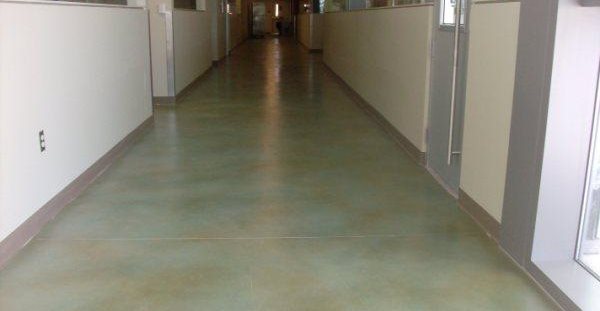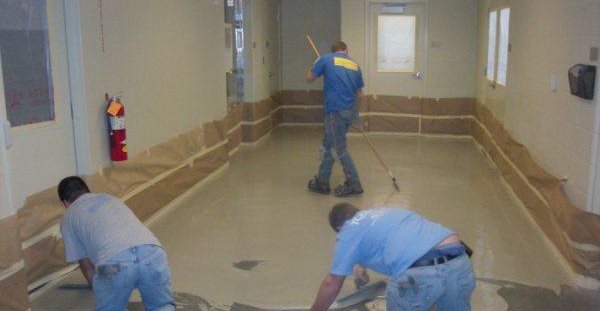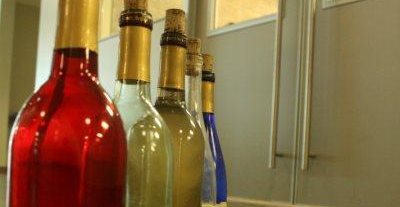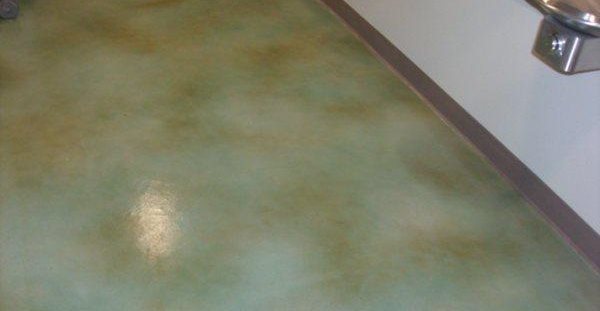Wine stains on a floor are usually considered to be an eyesore. But Todd Rose of Todd Rose Decorative Concrete has discovered a clever way to use wine to enhance the color of concrete, as well as a way to pay homage to fine cuisine.
For a new culinary institute on the campus of Metro Community College in Omaha, Neb., Rose was asked to salvage a concrete floor poured by two different contractors, resulting in a non-uniform appearance. His solution was to cover the floor with a polymer overlay, but one that expressed the institute's culinary vision.
The 2,100-square-foot project included the entryways, corridor, and bathrooms of the facility. "We were asked what we could do to make the floor unique. I figured since it was culinary, I would stain it with wine," says Rose. "What was so cool about this project was the fact that the students also use wine to cook with."
This isn't the first time Rose has used alcohol as a thematic floor coloring. He also used beer along with dye to color a restaurant floor in a micro-brewery (see Using Beer and Dye to Color Brewery Floor). "We are getting calls to make commercial floors quite unique for the customer," says Rose. "This is one area I feel decorative concrete can become more and more value-added."
To prepare the floor for the overlay, Rose's crew gave it a light grinding with a polisher. Then they applied a two-component cementitious topping designed for resurfacing interior concrete floors in high-traffic settings (Cem-Rez HT from Arizona Polymer Flooring). Once the overlay cured, it was ready for its christening with wine.
To achieve a variegated effect, Rose mixed the bottles of wine with water-based dyes in several different hues, including chestnut, moss, indigo, and eggplant. He applied the wine and dye mixtures with a high-volume low-pressure spray gun, and then sealed the floor with two coats of water-based epoxy and a coat of polyurethane, also from Arizona Polymer Flooring.
"One thing that concerned me was the fact that wine is acidic and overlays tend to be alkaline. But we tested the pH first, and we did not have any problems with the test samples we made," says Rose.
So how many bottles of wine were "consumed" for this project? Only seven, Rose says. Best of all, the wine was gratis. "My wife Sarah asked local wine producer James Arthur Vineyard in Lincoln, Neb., to donate the wine. Of course, they just loved the idea."
Todd Rose Decorative Concrete
Lincoln, NE 68507
Learn more about using concrete for brewery floors



